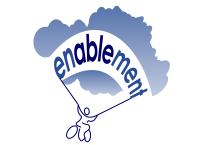Cerebral Palsy Introduction
Introduction
[edit | edit source]
The information on this page has developed for you from the expert work of Roelie Wolting alongside the Enablement Cerebral Palsy Project and Handicap International Group.

|
This page will provide you with information on Cerebral Palsy (CP) such as definitions, causes, epidemiology and aetiology. This page will provide you with knowledge and better understanding of CP and how it affect children and their families.
Definition [edit | edit source]
There are several definitions of Cerebral Palsy within the literature, although these may all vary slightly in the way they are worded they are all similar and can be summerised to:
Cerebral Palsy is a group of permanent, but not unchanging, disorders of movement and/or posture and of motor function, which are due to a non-progressive interference, lesion, or abnormality of the developing/immature brain.
This definition specifically excludes progressive disorders of motor function, defined as loss of previously acquired skills in the first 5 years of life.
Time Frame of Brain Injury[edit | edit source]
We only talk about cerebral palsy if the brain damage arises during one of the following periods:
Prenatal period:
- Conception to the onset of labor
Perinatal period:
- 28 weeks intrauterine to 7 days
Postnatal period :
- First two (and some say five) years of life
After the age of 5 we speak of stroke or traumatic brain injury.








